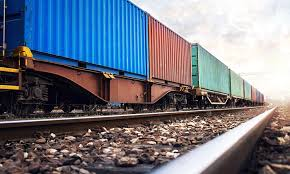India–US Trade Tensions Rise Over Steel and Auto Tariffs NMDC Limited reports a 38% drop in Q4 FY24 consolidated net profit RINL to Raise $23 Million Through Land Sales Amid Crisis

Indian Railways plans to build an additional 200 Gati Shakti multi-modal terminals to increase freight profits and decongest existing routes for speedier passenger train movement. Railways anticipate an average cost of ₹70 crores per terminal, totalling ₹14,000 crores, according to officials involved in discussions.
According to officials aware of the progress, 60 terminals under the public-private partnership (PPP) mode are already operational, and the remaining 40 are expected to be in place by the end of the current fiscal. These terminals are used for handling bulk cargo by corporates that have interlinkages with Indian Railways. The GCT operates for non-passenger commercial uses like freight. They are set up under a new policy that helps monetize vacant railway land.
Railways earned approximately 2.56 lakh crore in FY24, with freight services accounting for 70% of total earnings. The first phase of the Gati Shakti Cargo Terminal Policy will see the development of around 100 multi-modal terminals by 2024-25. Around 77-odd are ready and commissioned at an estimated cost of ₹5,400 crore.
These terminals have been built in West Bengal, Jharkhand, Odisha, Telangana, Tamil Nadu, and Uttar Pradesh, among other places. Some operators include Concor, Reliance, Adani, Western Coalfields, Wonder Cements, JSW, SECL, IOCL, and BPCL.
Gati Shakti Cargo Terminals can be developed by private players and on non-railway land or even fully/partially on Railway land. For terminals on non-railway land, the operators will identify the location and will construct the terminal after obtaining the necessary approval.
If terminals are coming up either fully or partially on Railway land, the railways will identify the land parcels and the operator for the construction and operation of the terminal will be selected through an open tendering process.
The Railways, say the official, is looking to push for a greater share in the country’s overall freight traffic. The share of freight carried by Railways is 29% at present, up from 27% in 2020. The plan is to take it up to 35% by 2030.
Of the 5,500 million tonnes (MT) of cargo carried across the country, some 1,600 MT odd was moved by the railways in FY24. Loading was to the tune of 787.6 MT of coal, 181 MT of iron ore, 154 MT of cement and 114.4 MT across other categories that include volume-brd items like white goods, among others.
“As these multi modal terminals come up, there will be faster movement of goods, de-congestion of tracks for passenger trains too,” says one of the officials. Also, to complement this plan, the railways will continue adding 5,000 km of new tracks every year, at least for another three to five years.
Also Read : AM/NS takes control of India’s top ore handling complex at Vizag Port Gujarat and DP World Sign Agreements To Strengthen Logistics In The State